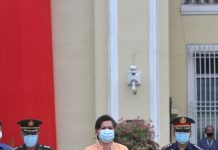A study conducted by a New York based international non-profit group funded by the United Nations Industrial Development Organization, among others, has shown that the high level of mercury in Pulabato River in South Cotabato may be due to the rampant practice of illegal small scale mining in the area.
Blacksmith Institute via their Global Inventory Project (GIP) has completed 30 clean-up projects on polluted bodies of water and is currently engaged in over 40 projects in 19 countries. It is likewise supported by Green Cross Switzerland and the European Commission.
The GIP findings for Pulabato River were presented to the Provincial Mining Regulatory Board (PMRB) chaired by South Cotabato governor Arthur Pingoy who attended the presentation.
“Right now we attribute the contamination of Pulabato River to small scale mining since these activities use mercury,” said Prof. Nelson Pampolina, environmental biologist and senior investigator for Blacksmith’s GIP.
“We have investigated similar cases in Kematu, T’boli, also in South Cotabato,” Pampolina said.
Data show that illegal small scale mining employs the “sluice” process (banlas in the local dialect) which involves pressure driven water hoses aimed at the deposit. A catchment is reserved for the loose rocks and soil where workers pan these materials and then separate grains of gold by using mercury. Aside from the sedimentation caused by the crude technology, the mercury-contaminated water goes directly to the ground and to water sources.
In a related development, Anacleto Suelto of Sagittarius Mines, Inc. (SMI) has corroborated Blacksmith’s findings. SMI is the project proponent of the Tampakan copper-gold project in South Cotabato which is set to begin operations in 2016.
“As early as 2007 we have detected mercury in the Pulabato River,” Suelto said.
Suelto bared that his company has had water monitoring data in the area since 1995 but that it began monthly monitoring of the river beginning April of 2007. Based on company records, SMI has 37 surface water monitoring sites, 12 stream flow monitoring stations, six automatic weather stations, 12 rain gauges, and 17 groundwater observation wells all over its project area.
Blacksmith, however, clarified that although their job is to identify and evaluate polluted waters, the clean-up depends largely on local initiatives and that it will only assist in the clean up.
“Here are the data,’ Pampolina said. “it is up to the local government to do what it wants with it.”






